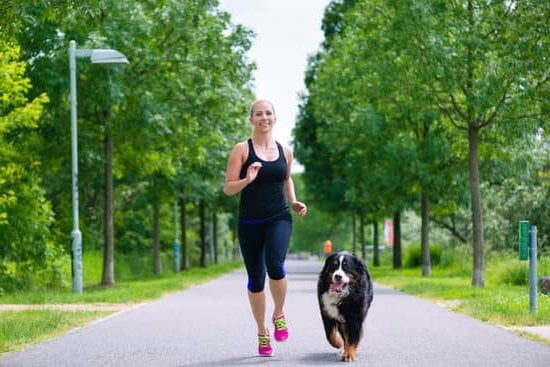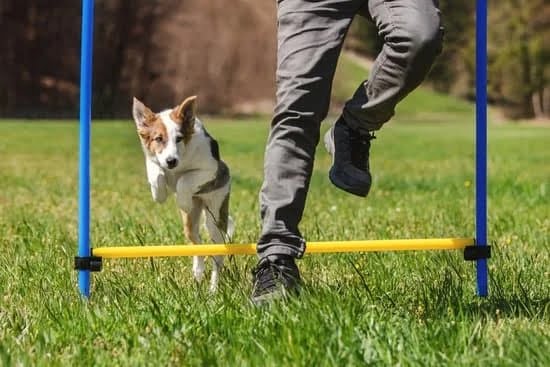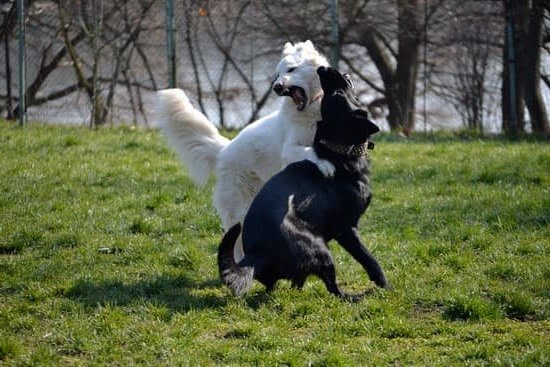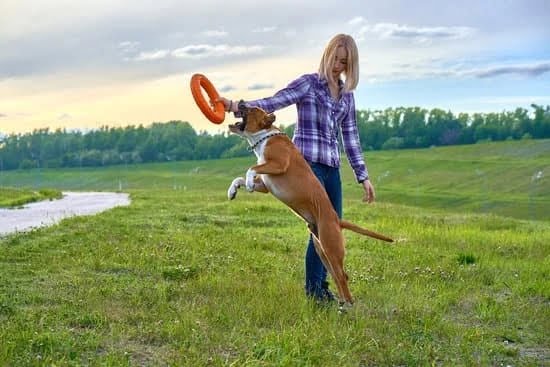Are you looking to learn how to train your dog to stay by your side? Whether you are a new pet owner or have had a furry friend for years, having a well-behaved dog that sticks by your side is essential for a harmonious relationship. In this article, we will explore the importance of having a well-trained dog and provide effective tips and techniques on how to achieve this goal.
Building a strong bond with your dog is the cornerstone of successful training. By establishing trust and communication, you can create a foundation for teaching your dog to stay by your side. We will delve into the key strategies for bonding with your pet and how it can positively impact their behavior.
Starting with basic commands such as sit, stay, and come is essential in laying the groundwork for training your dog to remain close to you. We will discuss the principles of positive reinforcement using treats, praise, and affection as powerful tools in encouraging desired behaviors in your furry companion.
Additionally, we will explore techniques for practicing in different environments and handling distractions to help keep your dog focused on you. Stay tuned for valuable insights on leash training, gradual progression, consistency, and patience – all crucial elements in effectively training your dog to stay by your side.
Building a Strong Bond
Understanding the Importance of a Strong Bond
Building a strong bond with your dog is crucial for successful training, especially when it comes to teaching your dog to stay by your side. A strong bond creates trust, communication, and understanding between you and your pet. It allows you to effectively guide and influence your dog’s behavior, making the training process more effective and enjoyable for both of you.
Investing Time and Effort in Bonding Activities
To build a strong bond with your dog, it’s important to invest time and effort in various bonding activities. Spending quality time with your pet through playtime, walks, and snuggle sessions can help strengthen the connection between you. Engaging in interactive games such as fetch or hide-and-seek can also enhance the bond while providing mental stimulation for your dog.
Creating Trust Through Training
Training sessions provide an excellent opportunity to reinforce the bond with your dog. By using positive reinforcement techniques such as treats, praise, and affection, you can create a sense of trust and cooperation between you and your pet. When your dog learns that staying by your side results in positive rewards, they will be more inclined to exhibit this behavior consistently. This trust is essential for mastering the skill of staying by your side during walks or other activities.
Starting With Basic Commands
When it comes to training your dog to stay by your side, beginning with basic commands is crucial. Teaching your dog to sit, stay, and come are fundamental building blocks for further training and establishing a strong foundation for good behavior. By mastering these basic commands, you can effectively communicate with your dog and control their movements, ultimately leading to a well-behaved and attentive companion.
The Importance of Basic Commands
The commands “sit,” “stay,” and “come” are essential for ensuring the safety and obedience of your dog. “Sit” teaches your dog to relax and remain in one place, “stay” encourages them to hold their position even when tempted to move, and “come” prompts them to return to you when called. These commands not only promote discipline but also foster a sense of trust between you and your dog.
Utilizing Positive Reinforcement
When teaching these basic commands, positive reinforcement is key. Utilize treats, praise, and affection to encourage desired behavior in your dog. When they successfully follow a command, reward them immediately with their favorite treat or verbal praise.
This positive association will motivate them to continue obeying commands in the future. Remember that patience is important as you train your dog-it may take time for them to understand what is expected of them, but consistency and positivity will yield successful results in the long run.
Positive Reinforcement
Training your dog to stay by your side requires consistent and positive reinforcement. This means using treats, praise, and affection to encourage the desired behavior. Positive reinforcement is a powerful tool in dog training as it helps your dog associate staying by your side with pleasant experiences, making them more likely to repeat the behavior.
When using treats for positive reinforcement, it’s important to choose small, easily consumable goodies that your dog loves. Treats should be given immediately after your dog exhibits the desired behavior – in this case, staying by your side. Over time, you can gradually decrease the frequency of treat rewards as your dog becomes more consistent with staying close to you.
In addition to treats, verbal praise and physical affection can also be effective forms of positive reinforcement. When your dog stays next to you as directed, use a happy and upbeat tone of voice to show your approval. You can also pet or scratch them as a way of reinforcing the behavior. This combination of treats, praise, and affection will help create a strong association between staying by your side and pleasing interactions with you.
| Positive Reinforcement Method | Examples |
|---|---|
| Treats | Small pieces of chicken or cheese |
| Praise | “Good boy/girl.” “Well done.” |
| Affection | Gentle pets or scratches behind the ear |
Practicing in Different Environments
When training your dog to stay by your side, it’s important to practice in different environments to ensure that your furry friend remains focused in various settings. Dogs can easily get distracted by new sights, sounds, and smells, so training them to ignore these distractions and remain attentive to you is crucial for their obedience.
One effective way to help your dog stay focused in different environments is to gradually expose them to new surroundings while practicing the basic commands. Here are some tips on how to achieve this:
- Start with a quiet and familiar environment, such as your backyard or a quiet park, where there are minimal distractions.
- Once your dog has mastered staying focused in a calm setting, gradually introduce them to more stimulating environments, such as busy streets or dog parks.
- Use positive reinforcement techniques, such as treats and praise, to reward your dog for maintaining focus amidst distractions.
Another helpful strategy is to vary the training locations so that your dog learns to stay focused regardless of the surroundings. By practicing the “stay” command in different settings, you will be teaching your dog that they need to remain attentive no matter where they are.
How to Train Your Dog to Stay by Your Side
Furthermore, it’s important not to rush this process and allow your dog plenty of time to adjust to each new environment. Consistency is key when practicing in different locations; patience and persistence will ultimately lead to success. Remember that every dog is unique, so some may require more time and practice than others. With dedication and positive reinforcement techniques, you can successfully train your dog to stay by your side no matter where you go.
Handling Distractions
When it comes to training your dog to stay by your side, one of the most important skills to teach them is how to handle distractions. This is crucial for ensuring that your dog remains focused on you, even in the midst of various external stimuli.
To start, it’s important to establish a strong foundation by teaching your dog basic commands such as sit, stay, and come. Once these foundational commands are mastered, you can begin introducing distractions gradually. Start with relatively mild distractions and gradually increase the level of difficulty as your dog becomes more adept at ignoring external stimuli.
Positive reinforcement is key when it comes to helping your dog stay focused despite distractions. Rewarding your dog with treats, praise, or affection when they successfully ignore a distraction and remain focused on you will encourage them to continue this behavior in the future. Another effective method is using a clicker to mark the moment when your dog chooses to focus on you instead of the distraction.
| Distraction Level | Response |
|---|---|
| Mild | Remain focused on handler |
| Moderate | Ignore minor distractions (e.g. other people walking nearby) |
| High | Stay attentive even in busy or crowded environments |
Leash Training
Leash training is a crucial aspect of teaching your dog to stay by your side. It not only ensures their safety during walks but also helps in maintaining control and direction. The first step in leash training is to introduce the leash to your dog in a positive and reassuring manner. Start by allowing your dog to get accustomed to wearing the collar and leash indoors while providing treats and praise for their cooperation.
Once your dog is comfortable with the leash, it’s time to work on teaching them to walk beside you without pulling or lagging behind. Use a short leash and hold it close to your body, keeping a firm but gentle grip. Encourage your dog to stay by your side using positive reinforcement such as treats, verbal praise, or toys. Gradually increase the distance you cover together, all while rewarding good behavior.
Consistency is key in leash training – ensure that you use the same commands and techniques every time you walk with your dog. Practice walking in different environments with varying levels of distraction, gradually increasing the difficulty as your dog learns to stay focused on you.
With patience and persistence, you can train your dog to confidently stay by your side no matter where you go. Remember that leash training takes time and effort, but the bond and connection you build with your furry companion make it all worth it.
Gradual Progression
When training your dog to stay by your side, it’s important to gradually progress from short walks to longer outings while maintaining good behavior. This gradual progression allows your dog to build confidence and consistency in their training, leading to a well-behaved companion in various situations. Here’s how you can advance your dog’s training while keeping them close and attentive.
Start by taking short walks in familiar surroundings where there are minimal distractions. Use the basic commands of sit, stay, and come to reinforce your dog’s ability to listen and respond to your cues. As they become comfortable with these commands in a low-distraction environment, gradually increase the length of your walks. This will help your dog learn to focus on you and stay by your side even as the environment becomes more stimulating.
As you progress to longer outings, such as hikes or visits to busier areas, continue to practice the commands and techniques that have been effective in previous sessions. It’s important to remember that each new environment may present different challenges for your dog, so be patient and consistent in providing guidance and positive reinforcement. By maintaining good behavior during longer outings, your dog will learn to stay close by your side even in more unpredictable situations.
Consistency is key when advancing from short walks to longer outings. Continuously reinforcing the desired behavior with treats, praise, and affection will help solidify their understanding of staying by your side. Remember that every dog learns at their own pace, so remain patient throughout this progression. With time and dedication, you’ll soon enjoy the rewarding results of having a well-behaved companion who stays by your side in any situation.
Consistency and Patience
When it comes to training your dog to stay by your side, consistency and patience are crucial. Dogs thrive on routine and repetition, so it’s important to establish a consistent training schedule and stick to it. Whether you’re working on basic commands or leash training, make sure to set aside dedicated time each day for practice.
Additionally, be patient with your dog as they learn new behaviors and skills. Remember that every dog learns at their own pace, so it’s essential to remain calm and positive throughout the training process.
Consistency also extends to the way you communicate with your dog. Use clear, concise commands and gestures to convey what you expect from your dog. Whether you’re teaching them to sit, stay, or come, use the same verbal cues and hand signals each time. By doing so, your dog will begin to understand what is expected of them more easily.
Another aspect of consistency is being mindful of how you react to your dog’s behavior. Consistently reinforcing positive behaviors with treats, praise, and affection can go a long way in encouraging your dog to stay by your side. On the other hand, consistently redirecting undesirable behaviors can help in shaping good habits.
In addition to consistency, patience is also key in successfully training your dog to stay by your side. Some dogs may pick up on new commands quickly while others may take longer to grasp them. It’s important not to rush the process or become frustrated if your dog doesn’t immediately respond as desired. With patience and perseverance, you will see progress over time as your bond with your furry companion grows stronger.
Conclusion
In conclusion, training your dog to stay by your side is a rewarding endeavor that requires dedication, patience, and consistent effort. By understanding the importance of having a well-behaved dog by your side and building a strong bond based on trust and respect, you set the foundation for successful training. Starting with basic commands such as sit, stay, and come, and utilizing positive reinforcement through treats, praise, and affection will encourage desired behavior from your furry companion.
Practicing in different environments and handling distractions are essential steps in helping your dog stay focused on you. Leash training using proper techniques will also keep your dog close and attentive during walks. The gradual progression from short walks to longer outings while maintaining good behavior is crucial for long-term success in training your dog to stay by your side.
Remember that consistency and patience are the most important factors in successfully training your dog to be a well-behaved companion. With dedication to the process, you will undoubtedly experience the rewarding results of having a loyal and obedient furry friend who stays by your side through thick and thin. So, put in the effort now, because the benefits of a well-trained canine companion are truly immeasurable.
Frequently Asked Questions
How Do I Keep My Dog by My Side?
Keeping your dog by your side requires consistent training and positive reinforcement. Start with basic commands like “heel” and reward your dog for staying close to you during walks. Gradually increase the distance before giving treats.
How Do You Train a Dog to Stay by Your Side Without a Leash?
Training a dog to stay by your side without a leash takes patience and consistency. Begin in a controlled, safe environment and use positive reinforcement, such as treats or praise, when your dog stays next to you. Slowly increase the distractions and duration of the training sessions.
How Do You Train Your Dog to Sit Next to You?
To train your dog to sit next to you, start by luring them with a treat while saying “sit.” Once they are sitting, reward them with the treat and affection. Gradually decrease the use of treats as they become more consistent with the command.

Welcome to the blog! I am a professional dog trainer and have been working with dogs for many years. In this blog, I will be discussing various topics related to dog training, including tips, tricks, and advice. I hope you find this information helpful and informative. Thanks for reading!





